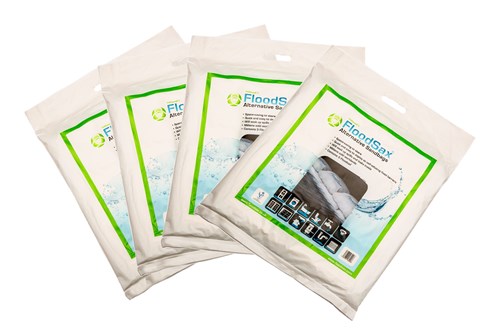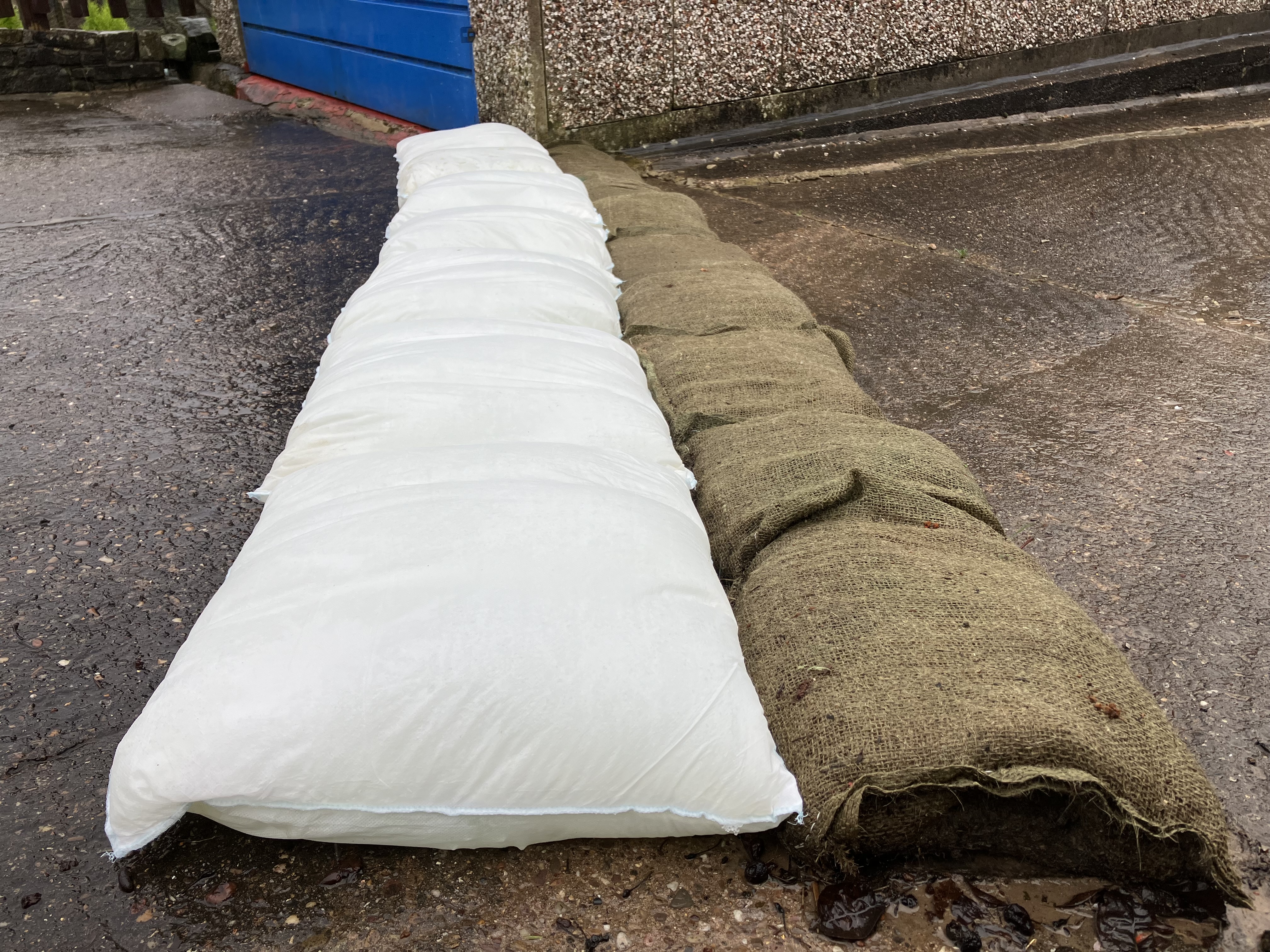An alternative sandbag that’s space-saving to store yet quick and easy to deploy is helping to save elderly, frail, disabled and vulnerable people from the misery of flooding.
Many people now opt for FloodSax sandless sandbags as traditional sandbags are way too heavy and cumbersome for them to fill and shift.
Surprisingly, Saga Home Insurance for people aged over 50 has just brought out advice on how to prevent flooding and says people should use soil or sand and put it in hessian bags themselves.
The insurance company states: “One of the best flood defences for your home is a flood barrier which you can make yourself. Fill hessian sacks three-quarters full of sand or sandy soil and keep them ready to put in front of doors in case of flood.”
This goes against the advice from flooding experts who say sandbags are difficult to store, tricky to fill, unwieldy to shift and often deteriorate when they come into contact with floodwater so can be ineffective very quickly.
British flood resilience campaigner and consumer champion Mary Dhonau goes so far as to say sandbags should be banned.

Sandbags quickly deteriorate and fall apart in floodwater
She said: “Whenever a flood is imminent everyone at risk calls for the humble, inefficient and environmentally unfriendly sandbag which I consider to be no more than a ‘comfort blanket’ when a flood emergency happens.
“Sandbags do little more than filter floodwater and are time consuming to fill and put in situ. Now is the time for people to really see just how ineffective sandbags truly are and to ban them in favour of proven, modern alternatives.”
One of these is FloodSax which Mary Dhonau champions as a great alternative, especially as it’s largely biodegradable by weight so is way more environmentally friendly than sandbags.

Mary Dhonau being interviewed by national TV news about FloodSax
Sandbags were tested independently three years ago in a British Standard Institute testing tank. Four placed in front of a household door failed against floodwater after just 59 seconds while 10 sandbags only held the water back for two minutes.
The sand was also washed out of the bags, blocking the sump pump used to drain water out of the tank and this also often happens in drains during floods, clogging them up so water can’t go down them the next time there is a flooding emergency, causing yet further flooding.
Mary added: “Sandbags do more harm than good and it frustrates and upsets me to see them continually being used as a go-to solution when they simply don’t work.”
The great thing about FloodSax is that they come vacuum-packed in bags of 5 which makes them easy to store and they look like large pillowcases when you get them out.

Unlike sandbags, they are multi-purpose and can be used inside and out to stop all kinds of flooding and escapes of water.
In their dry state they are very flat with a large surface area so can be used inside to soak up drips, leaks and escapes of water to prevent severe damage to floors, electrics, furniture, skirting boards and plasterboard.

But simply immerse them in water and the gelling polymer inside the FloodSax absorbs the water and retains it, transforming the FloodSax into an instant sandless sandbag weighing around 20kg.
They are a uniform shape and size, unlike sandbags, which makes them easier to build into highly effective flood barriers.

An 80-year lady, Anne, uses FloodSax both outside and inside to sort out her complex flooding problems. Inside, she uses FloodSax to soak up water bubbling into her cottage from a spring running beneath it … and she also uses FloodSax as sandless sandbags outside to stop water getting in from a river that overflows next to her home, along with water that cascades down a mountain.
Anne said: “I just couldn’t lift sandbags as they are way too heavy. I put FloodSax against the steps in the hallway and by the door to soak up any floodwater so they don’t usually fully expand before I move them which makes them so manageable. I even pop one over the drain in the downstairs shower room in case water backs up through there.”

FloodSax were designed by Environmental Defence Systems Ltd based in the county of Yorkshire in England and they have sold almost 3 million worldwide since 2007.
Lucy Bailey from EDS said: “We were surprised to learn of the advice SAGA is giving out as there are other more efficient ways for older people to prevent flooding in their homes that are a lot easier to store and deploy.
“We are working with an insurance company at the moment which is providing FloodSax to their customers so they have a flood prevention device on hand 24 hours a day 365 days a year which will reduce the high payouts the company faces from flooding claims.”
The typical insurance claim for a flooded home is around £30,000, not to mention all the trauma and misery flooding causes with people forced out of their homes for months while the property is dried out and the expensive repairs sorted.
If an area has been badly flooded it’s also very difficult to find tradespeople to do the work. It’s always best to prevent flooding in the first place.

